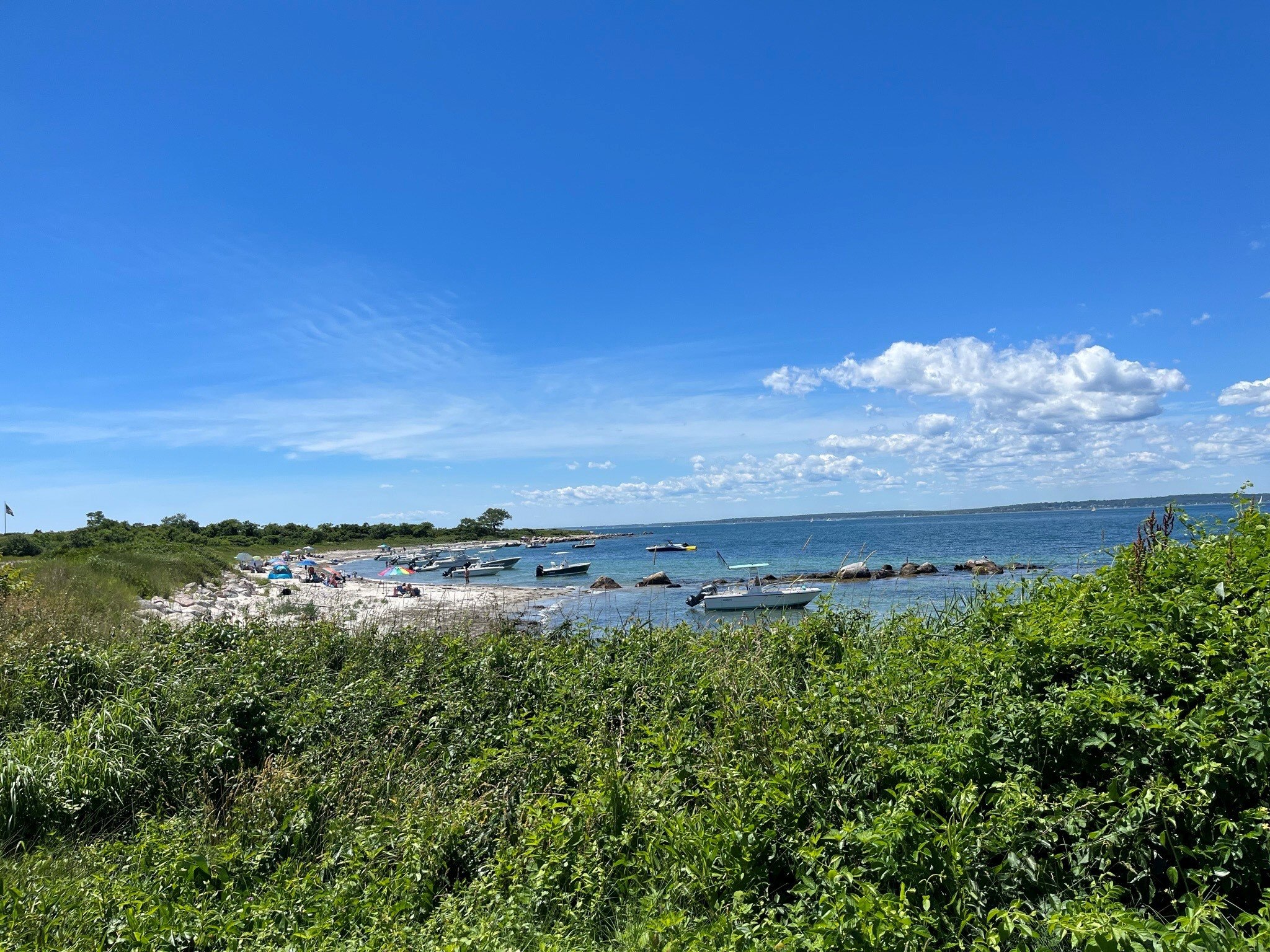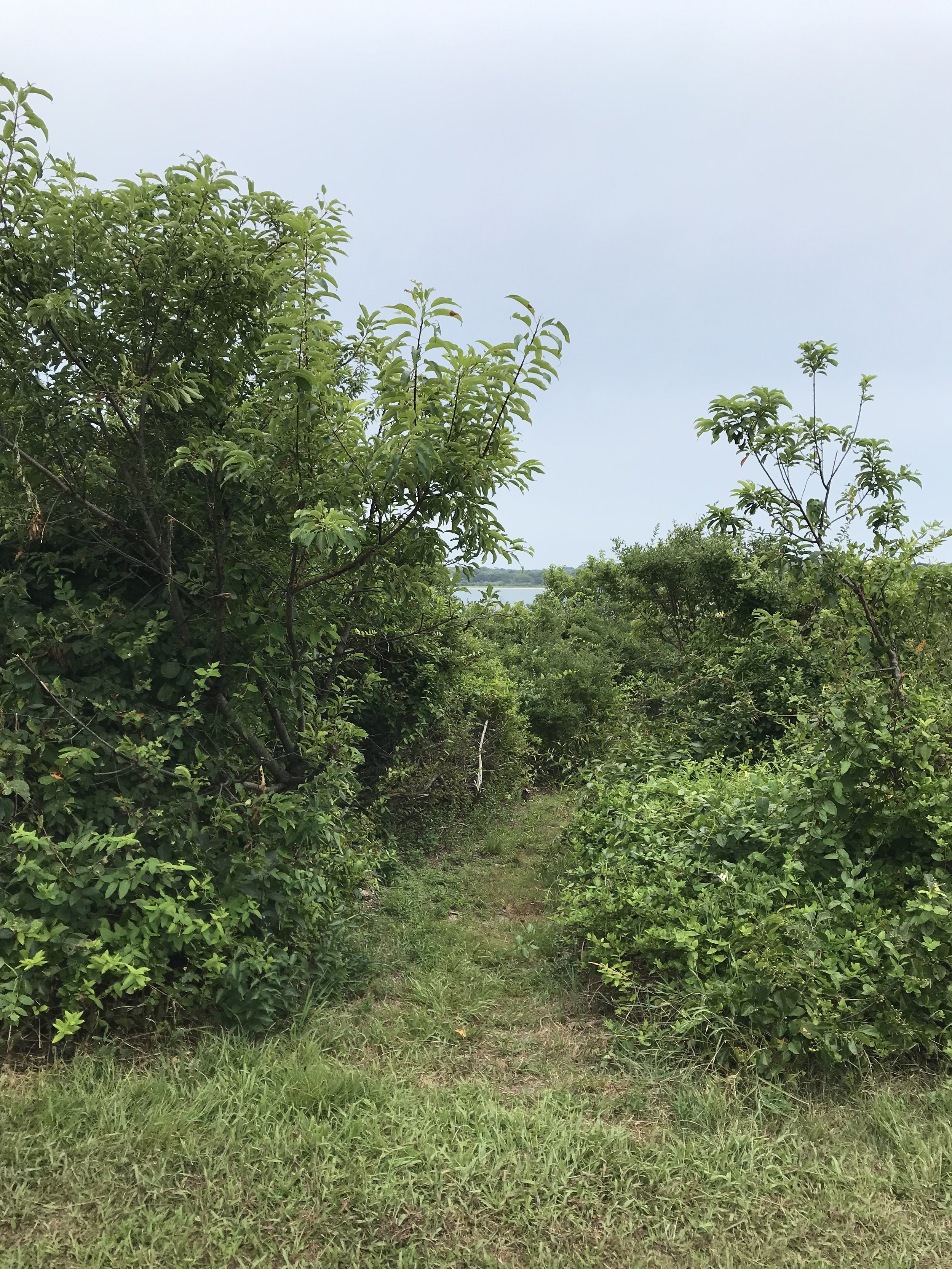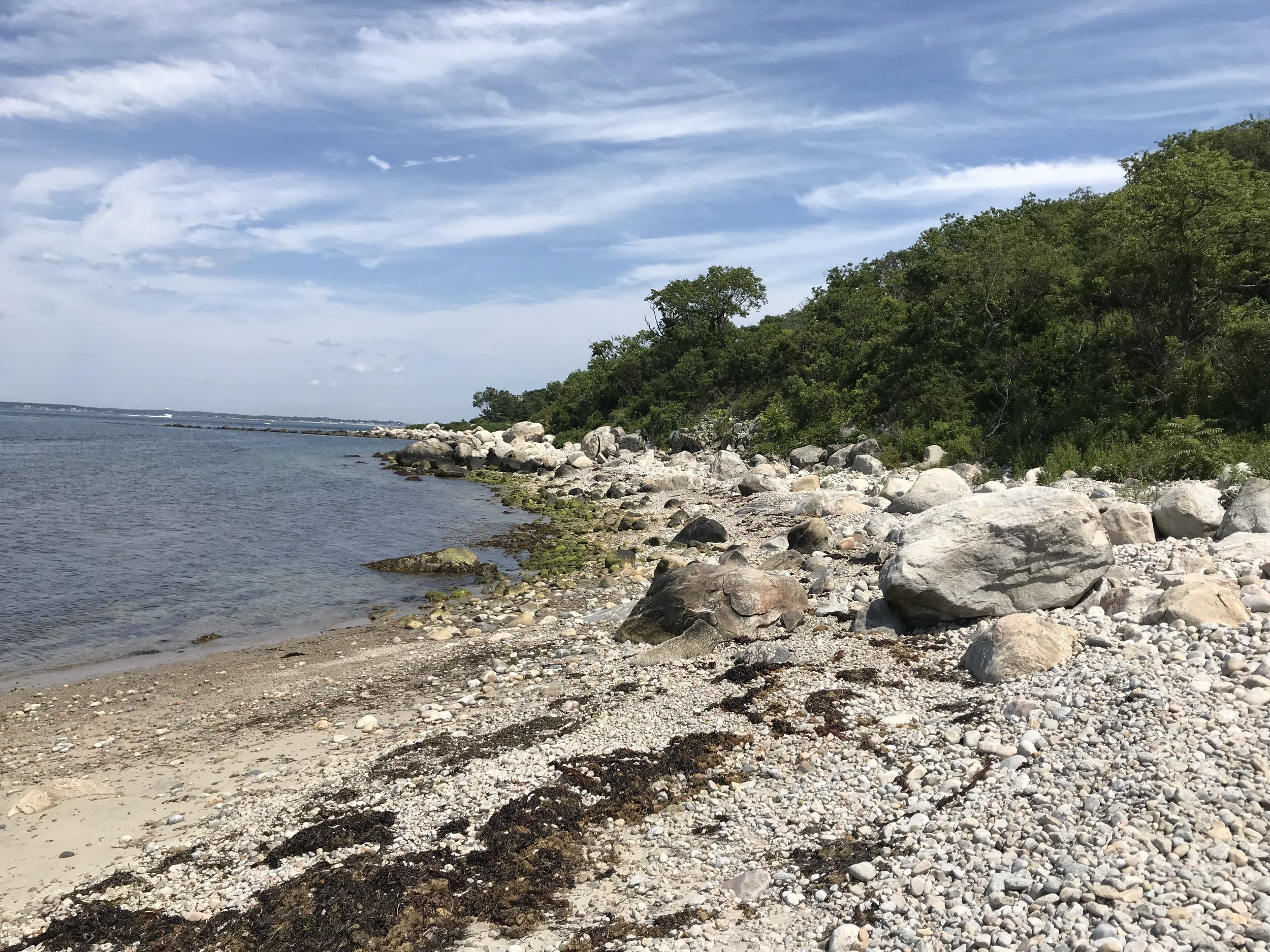
Create a Vegetated Buffer
A vegetated buffer is a strip of grass, shrubs, and trees running parallel to the water body. They are made from plants that are separate from your lawn. The EPA recommends that these strips should be used in all coastal water protection activities [1]. Vegetated buffers are comprised of layers whenever possible to ensure it achieves the desired effect.
On Fishers Island, we are concerned about nitrogen from fertilizer runoff and septic leakage, so our buffers need to contain plants that can slow the flow of surface and ground waters. Tall, densely planted native grasses are the most effective plant type to slow surface water runoff. The first, most landward side of your buffer should contain a strip of native grasses. This will ensure that the water slows enough to allow the nitrogen to be absorbed into the plants before running into Long Island Sound. Lawns are not a suitable substitute for this layer, as they are often cut too short to significantly affect flow.
Native hardwood trees and shrubs should form the second layer of your buffer and be closest to the water. These plants have deeper roots that can reach the deeper flowing water that contains nitrogen from septic tanks and cesspools. Nitrogen can be tricky to filter out of the water, so this layer of trees and shrubs will also absorb nitrogen that has sunk into the soils from the first grassy layer of the buffer [2].

Vegetated Buffers Work for You! [3]
How do vegetated buffers Save Our Seagrass?
When your buffer decreases nitrogen runoff
It is as easy as
-
The nitrogen will not fuel algal and phytoplankton blooms.
Epiphytes on eelgrass leaves will remain under control.
-
Without blooms interrupting the sunlight, eelgrass can photosynthesize without competition.
-
The excess nitrogen also will not be incorporated into the eelgrass tissues. This will promote better structural integrity of the plant, making it resilient to other threats.

When You Create Your Buffer



